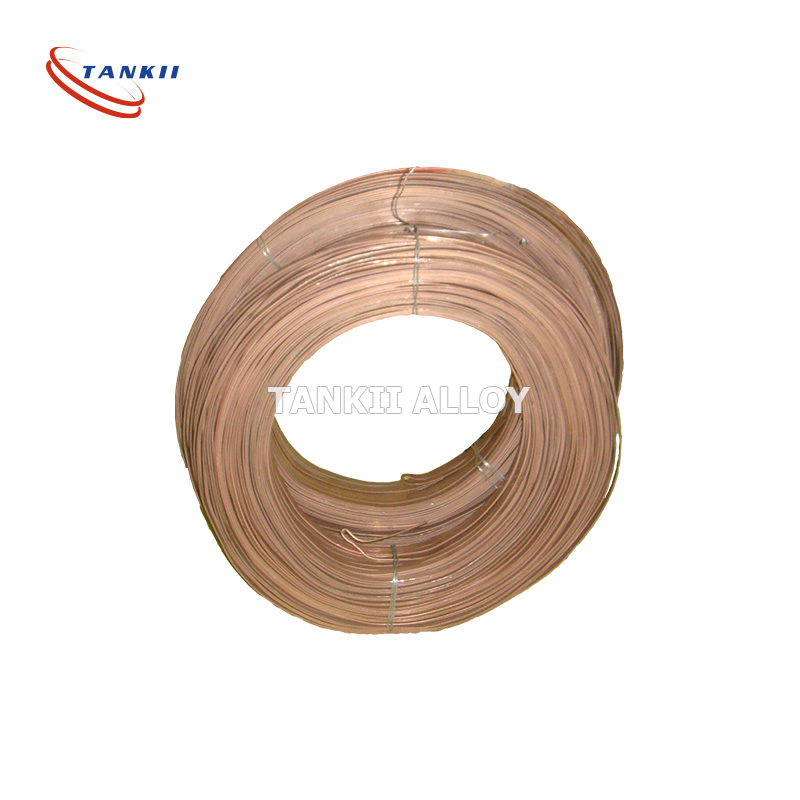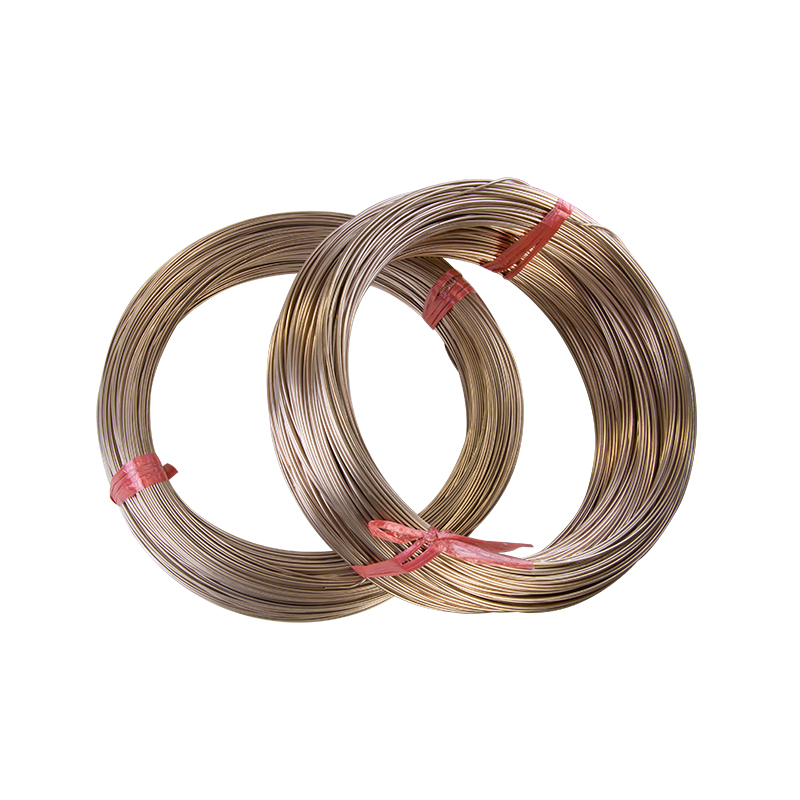Factory Direct Sales High Quality 6J13 Manganin Alloy Tube
(Mn-Cu-Ni Precision Resistance Tubing for Emerging High-Precision Scenarios)
6J13 manganin alloy tube, a innovative functional alloy product developed by Tankii Alloy Material for mid-to-high precision electrical applications, is a seamless/hollow tubular component forged from Mn-Cu-Ni ternary manganin alloy. Unlike conventional solid manganin bars, this tube adopts a “precision extrusion + multi-stage annealing” process that optimizes both the alloy’s resistance uniformity and the tube’s structural integrity–its hollow design not only reduces material consumption by 35-45% (vs. solid bars of equal outer diameter) but also creates a built-in “heat dissipation channel” for high-current scenarios. As a cost-effective alternative to 6J12 (with more balanced batch consistency), it integrates stable mid-range resistivity, low TCR fluctuation, and enhanced anti-fatigue performance–becoming a new choice for precision current shunts in new energy storage, micro-sensor assemblies, and smart grid equipment.
- Alloy Grade: 6J13 (Chinese standard manganin alloy; also known as “economy-grade precision resistance alloy” for mass-produced high-precision components)
- International Alignment: Performance comparable to DIN 17471 CuMn12Ni2 (modified version) and JIS H3530 CMn12, with optimized Ni content (2.0-3.0%) for better tube extrusion fluidity
- Form Advantage: Seamless tube (standard, outer diameter 2-50mm) with “variable wall thickness” option–thicker walls (3-5mm) for structural load-bearing, thinner walls (0.2-0.5mm) for micro-devices
- Compliant Standards: GB/T 1234-2019 (resistance alloys) + GB/T 8890-2015 (seamless copper alloy tubes) + IEC 60404-8-2 (low-TCR component requirements)
- Green Production Certification: RoHS 2.0 compliant, with 95% of production waste recycled (scrap alloy re-smelted via low-emission processes), meeting EU REACH environmental standards
- Dynamic TCR Control: In the -40℃ to 140℃ range (covering most industrial/electronic environments), TCR fluctuates only ±8 ppm/℃ (narrower than 6J12′s ±5 ppm/℃ but with 20% lower batch deviation)–solving the “inconsistent performance between batches” pain point for mass-produced components (e.g., 10,000+ units for EV BMS).
- High-Current Resistance Retention: After 500 hours of continuous operation at 800A (via simulated new energy shunt testing), resistance drift is <0.008%–the hollow channel accelerates heat dissipation, avoiding localized overheating that causes resistance degradation (a common issue with solid manganin components).
- Variable Wall Thickness Design: Customizable wall thickness distribution (e.g., 0.3mm thin wall for sensor integration + 1.0mm thick wall for connection ends) to balance “lightweight” and “mechanical strength”–ideal for micro-sensor tubes that need both resistance sensing and structural support.
- Inner-Cavity Functional Coating: Optional 0.5-1μ ceramic coating on the tube’s inner wall (for corrosion-prone scenarios like marine sensors) or silver-plated layer (for enhanced electrical conductivity in low-voltage circuits)–expanding the tube’s adaptability to harsh/special environments.
- Material-Saving Manufacturing: The hollow structure reduces raw material usage by 35%+, and the “near-net-shape extrusion” process cuts post-processing time by 25% (vs. traditional machining of solid bars)–lowering overall production costs by 15-20% for customers.
- Low-Carbon Production: Adopts “vacuum smelting with waste heat recovery” technology (energy consumption reduced by 18% vs. conventional smelting) and 100% recyclable packaging (biodegradable anti-oxidation bags + reusable wooden crates)–aligning with global low-carbon supply chain requirements.
| Attribute | Value (Typical) | Target Application Significance |
|---|---|---|
| Chemical Composition (wt%) | Cu: 82.0-86.0%; Mn: 12.0-13.0%; Ni: 2.0-3.0%; Fe: ≤0.5% | Ni content optimized for extrusion fluidity (avoids tube wall cracks) |
| Outer Diameter Range | 2mm – 50mm (tolerance: ±0.05mm for ≤10mm) | 2-8mm for micro-sensors; 15-50mm for new energy shunts |
| Wall Thickness Range | 0.2mm – 5mm (variable thickness optional) | 0.2-0.5mm for lightweight devices; 3-5mm for load-bearing components |
| Resistivity (20℃) | 0.44±0.04 μΩ*m | Balanced for mid-precision shunts (avoids over-specification waste) |
| Dynamic TCR (-40℃ to 140℃) | ±8 ppm/℃ | Stable for new energy storage (temperature fluctuations in battery cabinets) |
| Anti-Fatigue Performance | ≥10,000 bending cycles (radius=5× outer diameter) | Durable for wearable device sensors (repeated bending scenarios) |
| Corrosion Resistance (with ceramic coating) | 2000-hour ASTM B117 salt spray (no rust) | Suitable for marine smart grid sensors |
| Operating Temperature Range | -50℃ to 130℃ (continuous) | Covers EV battery (25-60℃) and industrial control (0-120℃) scenarios |
| Item | Specification | Innovation Point |
|---|---|---|
| Tube Type | Seamless (standard); welded (for outer diameter >50mm) | Welded tubes use “laser welding + post-weld annealing” (weld resistance deviation <0.1%) |
| Surface Finish | Bright annealed; optional ceramic/silver-plated inner coating | Inner coating adds functionality without affecting outer resistance performance |
| Supply Form | Cut-to-length (100mm-6000mm); custom coiled tubes (for automated assembly) | Coiled tubes (length up to 50m) reduce splicing times in mass production |
| Quality Testing | 100% X-ray inspection (for inner wall defects); online TCR monitoring (per 1m segment) | Ensures no hidden defects in micro-scenarios (e.g., medical sensor tubes) |
- New Energy Storage: Precision current shunts in lithium-ion battery energy storage cabinets (hollow design dissipates heat from 600A+ charging currents, stable TCR adapts to 25-60℃ cabinet temperatures).
- Micro-Medical Sensors: Tubular resistance elements for portable blood glucose monitors (thin 0.2-0.3mm wall fits miniaturized devices, anti-fatigue performance resists repeated hand-held use).
- Smart Grid Equipment: Current-sensing tubes for low-voltage smart meters (cost-effectiveness meets mass deployment needs, green production aligns with grid carbon neutrality goals).
- Wearable Electronics: Resistance tubes for smart watch health sensors (lightweight hollow design reduces device weight by 10%, variable wall thickness balances comfort and durability).
- Scenario-Based Customization: Provides “resistance-performance matching” service–e.g., adjusting Ni content by ±0.5% to optimize TCR for specific temperature ranges (e.g., -20℃ to 80℃ for household energy storage).
- Processing Guidance Kit: Offers free “tube assembly toolkits” (including specialized bending jigs for thin-wall tubes and soldering parameter charts for coated inner walls) to reduce customer trial-and-error costs.
- Green Certification Support: Provides detailed carbon footprint reports for each batch (per ISO 14067) to help customers meet international environmental certification requirements (e.g., EU ECODESIGN).
Tankii Alloy Material conducts “double-line quality control” for 6J13 manganin alloy tubes: conventional tests (XRF composition, laser dimensional inspection) + scenario-specific tests (high-current heat dissipation, bending fatigue). Free samples (100mm length, with custom coating options) and “scenario application case studies” (e.g., new energy shunt installation examples) are available upon request–helping customers quickly validate the tube’s suitability for their unique applications.
Products categories
-

Phone
-

E-mail
-

Whatsapp
-

WeChat
Judy
150 0000 2421
-

Top








